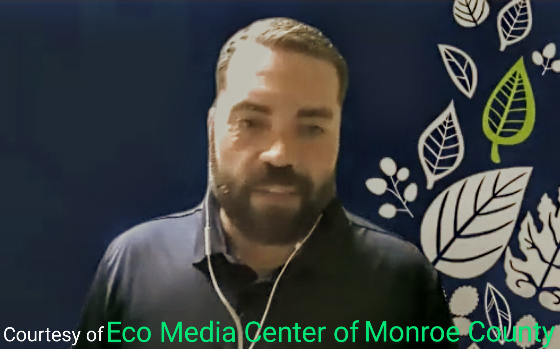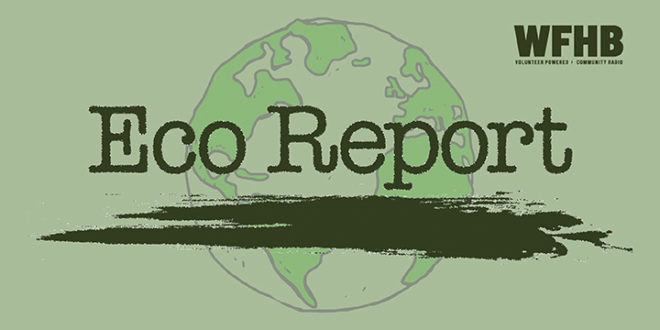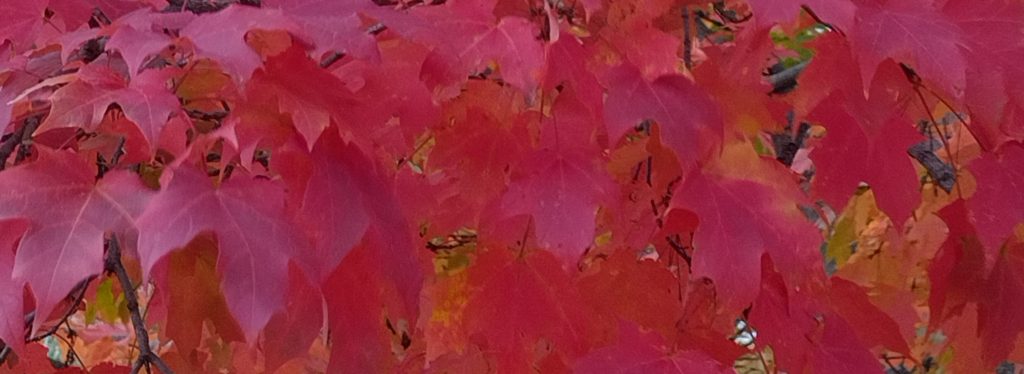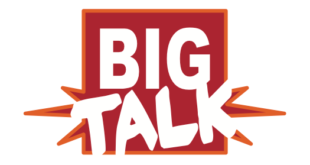Podcast: Play in new window | Download (Duration: 30:14 — 41.6MB)
Subscribe: RSS
| Hello and welcome to Eco Report. For WFHB, I’m Julianna Dailey. And I’m Cynthia Roberts. Later in the program, Environmental Correspondent Zyro Roze looked into what it will mean for local residents that the City will no longer be sending out vacuum trucks to collect leaves raked to the curbside and we have the answers from Michael Large, Special Projects Manager at the Department of Public Works. |
|
And now for your environmental reports: View one of Indiana’s greatest wildlife spectacles at Jasper-Pulaski Fish & Wildlife Area. Each fall, thousands of Sandhill Cranes visit the area’s shallow marshes from mid-October through mid-December. Crane numbers peak in late November or early December. Sandhill cranes can be seen at Jasper-Pulaski Fish & Wildlife Area from late September through December. The best time to view is sunrise from the Goose Pasture viewing area. DNR staff at Jasper-Pulaski Fish & Wildlife Area make weekly crane counts during peak fall migration (October – December). The count is typically performed each Tuesday unless impeded by inclement weather. If unable to count on a Tuesday, the staff will try again on Thursday of that week. The counts generally end the last week of December. —Norm Holy |
| Many people are not convinced that we are in a mass extinction event that will see at least one million species go extinct. The same crowd is also not concerned with ending the burning of fossil fuels. An Associated Press story reports that President Joe Biden has vetoed Republican-sponsored bills intended to undo federal protections for two endangered species that have seen their populations plummet over the years: the lesser prairie chicken and northern long-eared bat. The two GOP measures would overturn “science-based rulemaking” that offers important protections for the once-abundant species and would undermine the Endangered Species Act, Biden said.
The lesser prairie-chicken serves as an indicator for healthy grasslands and prairies, making the species an important measure of the overall health of America’s grasslands, the White House wrote late Tuesday in a veto statement about the prairie bird. It’s a member of the grouse family found in parts of the Midwest and Southwest, including the oil-rich Permian Basin in New Mexico and Texas. The bird’s range also extends into parts of Colorado, Oklahoma and Kansas. Environmentalists have long sought stronger federal protections for the prairie bird, which they consider severely at risk due to oil and gas development, livestock grazing and farming, along with roads and power lines. The crow-size, terrestrial birds are known for spring courtship rituals that include flamboyant dances by the males as they make a cacophony of clucking, cackling and booming sounds. The long-eared bat is one of 12 bat types decimated by the white-nose syndrome. The disease has spread across nearly 80% of the bat’s historic range in the eastern and north-central United States and has caused estimated population declines of at least 97%. Bats are critical to healthy, functioning ecosystems and contribute at least $3 billion annually to the United States agriculture economy through pest control and pollination, Biden said in a separate veto statement. He said the GOP bill “would undermine America’s proud wildlife conservation traditions and risk extinction of the species.” Republicans say protections for the lesser prairie chicken interfere with U.S. oil and gas production and jeopardize thousands of American jobs. In predictable Republican response, they say designation of the bird as an endangered species is another attack on low-cost energy for the American taxpayers. Republicans and the logging industry also criticized the endangered listing for the long-eared bat, contending it would hamper logging and other land uses that aren’t responsible for the bat’s sharp decline. The bat is found in 37 eastern and north-central states, plus Washington, D.C., and much of Canada. —Norm Holy |
| According to the New York Times, the battle over electric vehicles is central to the auto strike. Carmakers are anxious to keep costs down as they ramp up electric vehicle manufacturing, while striking workers want to preserve jobs as the industry shifts to batteries. The strike has come as the traditional automakers invest billions to develop electric vehicles while still making most of their money from gasoline-driven cars. The negotiations will determine the balance of power between workers and management, possibly for years to come. That makes the strike as much a struggle for the industry’s future as it is about wages, benefits and working conditions.
The established carmakers — General Motors, Ford Motor and Stellantis, which owns Chrysler, Jeep and Ram — are trying to defend their profits and their place in the market in the face of stiff competition from Tesla and foreign automakers. Some executives and analysts have characterized what is happening in the industry as the biggest technological transformation since Henry Ford’s moving assembly line started up at the beginning of the 20th century. —Norm Holy |
| The New York Times reports that buried in the permafrost at the northern edge of Greenland, scientists have discovered the oldest known fragments of DNA, offering an extraordinary look at an extraordinary ancient ecosystem. The genetic material dates back at least two million years — that’s nearly twice as old as the mammoth DNA in Siberia that held the previous record. And the samples, described on Wednesday in the journal Nature, came from more than 135 different species.
Together, they show that a region just 600 miles from the North Pole was once covered by a forest of poplar and birch trees inhabited by mastodons. The forests were also home to caribou and Arctic hares. And the warm coastal waters were filled with horseshoe crabs, a species that today cannot be found any farther north of Maine. Independent experts hailed the study as a major advance. —Norm Holy |
| An historic deal for the oceans has been reached. Following almost two decades of negotiations, nations agreed in March on a deal to protect the world’s oceans. Commonly referred to as the “High Seas Treaty,” the agreement aims to protect biodiversity by establishing large-scale protected areas (in line with last year’s UN biodiversity agreement which calls for protecting 30 percent of marine areas by 2030), and regulating damaging activities such as overfishing and deep-sea mining. The high seas, two-thirds of the world’s oceans, don’t fall under national jurisdiction, so exploitation of their resources has so far been a ‘free-for-all,’ with dire consequences for marine life. Countries still need to formally adopt the treaty, and it will likely take several years for policies in support of its goals to be implemented.
—Julianna Dailey |
| This story demonstrates how intelligent animals are. When confronted with recordings of human voices, 19 African species fled instantly, while they were less frightened by lion sounds and other potentially threatening recordings. |

And now we go to Zyro Roze and his interview with Michael Large, Operations Manager at the City’s Department of Public Works on their decision to discontinue curbside vacuum leaf collection, the environmental and health considerations involved, cost savings for the taxpayers, free bags, discount compost bins and volunteer programs designed to facilitate composting and assist residents who need help with their yard work this season.
|
| For Eco-Report, I am Julianna Dailey. And, I am Cynthia Roberts. Are you looking for a way to make a difference on environmental issues? Here at EcoReport we are currently looking for reporters, engineers, and segment producers. Our goal is to report facts on how we’re all affected by global climate disruption and the ongoing assaults on our air, land and water. We also celebrate ecologists, tree huggers, soil builders and an assortment of champions who actively protect and restore our natural world, particularly those who are active in south central Indiana.
All levels of experience and all ages are welcome, and we provide the training you’ll need. WFHB also offers internships. To volunteer for Eco-Report, give us a call at (812) 323-1200, or e-mail us at: [email protected]. |
|
And now for some upcoming events: Do you know how to tie a good knot? You are invited to the Knots and Lashings in the Outdoors Workshop on Sunday, October 8th, at the RCA Community Park from Noon to 2 pm. Learn up to 6 different types of knots and lashings, each with its own unique purpose. Register at bloomington.in.gov/parks. |
| Join the Big Sit and Wild Game Lunch at Goose Pond Fish and Wildlife Area on Sunday, October 8th, from 7 am to 5 pm. You can participate three different ways. First, sit in a 17 square foot area and count birds. Second,, make a wild game dish to share, and third, come and enjoy the day. |
| Join the Monroe Lake Geology Driving Tour at the Paynetown State Recreation Area on Monday, October 9th, from 9 am to 3:30 pm. Stops will include local bedrock layers, geodes, fossils, faults, an anticline and other interesting features. Bring your own lunch. Register at bit.ly/2023-geologytour. |
| Take an Invasive Plant Hike plus Pull and Wreath Making at Spring Mill State Park on Tuesday, October 10th, from 11 am to 12:30 pm. You will be pulling invasive vines, then you will use the vines to make a wreath. Meet at the Tulip Tree Shelter. |
| Help plant native trees to reforest the old field at the Ferguson Dog Park located at 4300 N. Stone Mill Road in Bloomington on Saturday, October 14th from 10 am to 1 pm. This Fall Native Tree Planting will help migrating birds, pollinators, small animals and native plants. Help make a difference. Register at bloomington.in.gov/parks. |
| And that wraps up our show for this week. Eco Report is brought to you in part by M-P-I Solar, a Bloomington business specializing in solar hot water, solar electricity and solar hot air systems. M-P-I Solar designs and installs solar power generation systems that encourage independence and individual responsibility. Found locally at 812-334-4003 and on the Web at mpisolarenergy.com. |
| This week’s headlines were written by Norm Holy and Julianna Dailey. Today’s news feature was produced by Zyro Roze and edited by Noelle Herhusky-Schneider. |
| Julianna Dailey assembled the script which was edited by Zyro Roze. Julianna Dailey compiled our events calendar. Kade Young and Noelle Herhusky-Schneider produced today’s show. Branden Blewett is our engineer. |
| For W-F-H-B, I’m Julianna Dailey. And I am Cynthia Roberts. And this is EcoReport. |
 WFHB Bloomington Community Radio
WFHB Bloomington Community Radio



